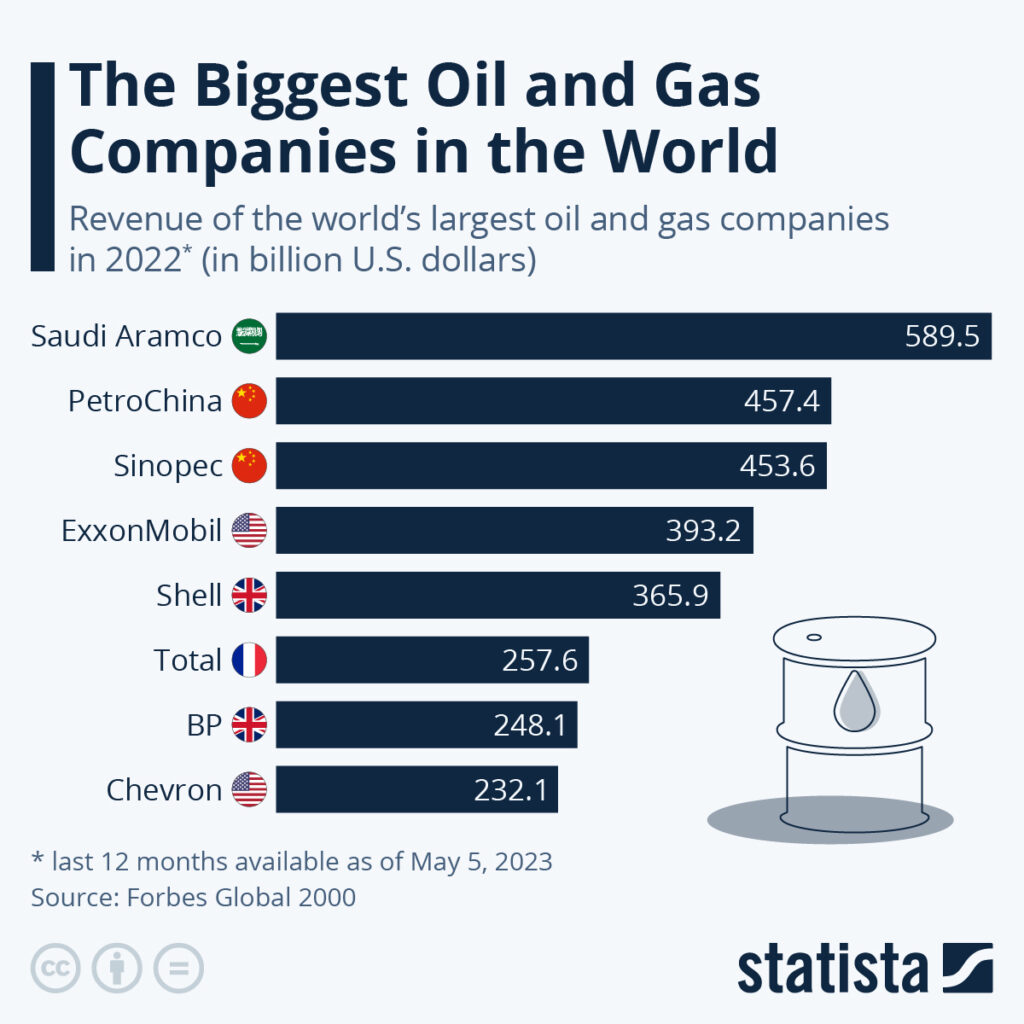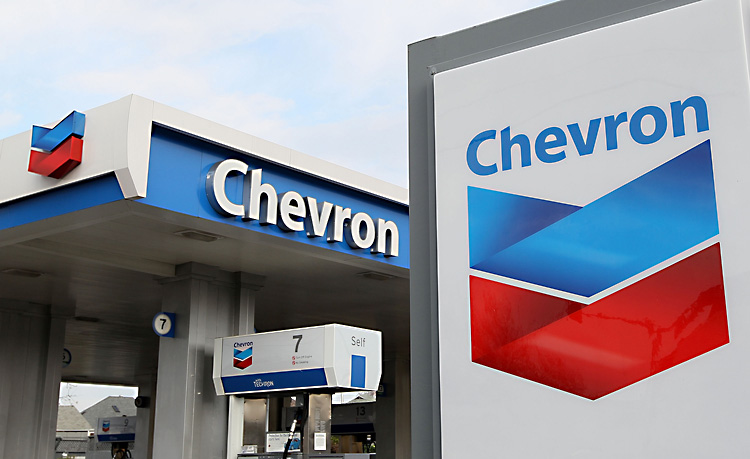Chevron is one of the world’s largest and most successful energy companies, with a rich history that spans over 140 years. Founded in 1879 as the Pacific Coast Oil Company, Chevron has evolved into a global giant with operations in over 30 countries and a diverse portfolio of upstream and downstream businesses. Today, Chevron is the second-largest oil company in the United States, behind only ExxonMobil, and ranks among the top five largest energy companies globally.

The company’s success can be attributed to its commitment to innovation, sustainability, and customer satisfaction. Chevron was one of the first energy companies to embrace the use of technology, introducing cutting-edge drilling techniques and exploration methods that have helped it unlock some of the world’s most challenging energy resources. Its focus on sustainability has led to significant reductions in greenhouse gas emissions and water usage, making it a leader in environmental stewardship within the industry. Additionally, Chevron has consistently been recognized for its excellent customer service, building strong relationships with consumers and business partners alike.
Chevron’s operations are diversified across various segments, including Upstream, Downstream, and Chemicals. The Upstream segment focuses on the exploration, production, and transportation of crude oil and natural gas, while the Downstream segment refines and markets petroleum products such as gasoline, diesel fuel, jet fuel, and lubricants. The Chemicals segment produces and sells chemicals used in a wide range of industries, from plastics and fibers to fertilizers and pharmaceuticals. This diversification has enabled Chevron to mitigate risks and capitalize on growth opportunities across different markets and geographies.
In recent years, Chevron has made significant investments in renewable energy technologies, recognizing the need to transition towards cleaner sources of power. The company has invested billions of dollars in wind, solar, and biofuels projects, positioning itself as a leader in the low-carbon future. This shift towards renewables complements Chevron’s existing strengths in fossil fuels, enabling it to provide a comprehensive suite of energy solutions to meet the changing needs of customers and contribute to a more sustainable future.
Overall, Chevron’s long history, commitment to innovation, and dedication to sustainability make it a formidable player in the global energy landscape. As the world continues to grapple with the challenges of climate change and energy security, companies like Chevron will play a critical role in shaping the future of our planet.
Marketing Strategies of Chevron
Chevron Corporation is a multinational energy corporation primarily engaged in the exploration, production, refining, and marketing of oil and gas products. Marketing strategies for a company like Chevron typically encompass various elements aimed at creating brand awareness, promoting products, and maintaining a positive brand image. Here are some key aspects of Chevron’s marketing strategies:
1. Brand Positioning
Chevron has carefully crafted a brand image that positions them as a leader in the energy industry, particularly when it comes to innovation, sustainability, and environmental responsibility. This message is central to their advertising campaigns, which showcase their dedication to developing clean energy solutions and delivering high-quality products.
However, their brand positioning goes beyond just advertising. Chevron heavily invests in research and development to ensure they stay at the forefront of technological advancements within the industry. Additionally, they cultivate a company culture built on core values like trust, respect, and accountability. These efforts contribute to their overall brand image and help them achieve their ultimate goal: becoming the most admired global energy company, recognized for its people, partnerships, and performance.
By combining these various strategies, Chevron strives to solidify its brand positioning in the minds of consumers, establishing themselves as a reliable and responsible leader in the ever-evolving energy landscape.
2. Digital Presence
Chevron understands the power of the digital landscape and actively cultivates a strong online presence. This presence encompasses various aspects, each contributing to their overall marketing strategy.
At the core lies their user-friendly website, serving as a comprehensive resource for diverse audiences. Customers, investors, and anyone interested can access information about Chevron’s products, operations, and sustainability efforts, fostering transparency and brand understanding. Social media platforms like Facebook, Twitter, and LinkedIn become platforms for engagement and thought leadership. Chevron actively shares updates, interacts with customers, and promotes its brand, fostering a sense of community and establishing itself as an industry authority.
Furthermore, Chevron invests in search engine optimization (SEO) to ensure their website appears prominently in search results. This increases organic traffic, allowing potential customers to easily discover them online. Content marketing plays a crucial role as well. Chevron regularly publishes informative and engaging blog posts and articles, adding value to visitors and further enhancing their SEO efforts.
By embracing these diverse digital strategies, Chevron effectively communicates its brand message, builds strong relationships with customers, and maintains a competitive edge in the ever-evolving energy sector.
3. Sponsorships and Partnerships
Chevron actively cultivates partnerships and sponsorships, both domestically and internationally, to amplify its reach and impact. These collaborations serve various purposes, ultimately contributing to their overall marketing strategy.
In the United States, Chevron focuses on educational initiatives. They partner with organizations like Fab Labs and Project SEED to equip students with valuable skills and knowledge in STEM fields, potentially nurturing future generations of talent in the energy sector. Additionally, their collaboration with Project Lead the Way expands access to engineering curricula, shaping young minds and fostering interest in these crucial areas.
Internationally, Chevron extends its partnerships to support professional development. Their collaboration with MIT provides employees with opportunities to pursue advanced degrees in relevant fields like digital technology and data analytics. This not only empowers their workforce but also fosters innovation and problem-solving within the company.
Beyond education, Chevron leverages sponsorships to connect with diverse audiences. Their involvement in the Chevron Championship, a major golf tournament, increases brand visibility and recognition among a broader audience. Similarly, their longstanding sponsorship of the children’s surgical program in Venezuela demonstrates their commitment to social responsibility and community well-being.
Furthermore, Chevron actively engages with professional associations like SWE, NSBE, and SHPE. These partnerships allow them to connect with diverse talent pools, promote inclusivity within the industry, and build stronger relationships with potential future employees.
By strategically engaging in sponsorships and partnerships, Chevron cultivates a multifaceted approach that not only supports various causes but also reinforces their brand image as a responsible, innovative, and community-oriented organization.
4. Community Engagement
Chevron prioritizes active engagement with the communities where it operates, focusing on three key areas: health, education, and economic development. This commitment stems from their belief that investing in these areas fosters lasting positive change and strengthens their overall marketing strategy.
Their initiatives are designed to create tangible improvements in the lives of community members. By supporting healthcare access, educational opportunities, and economic development, Chevron contributes to job creation, improved living standards, and a brighter future for these communities. Additionally, their efforts extend to environmental protection and promoting sustainable development, demonstrating a holistic approach to community well-being.
Several concrete examples showcase Chevron’s dedication. Their collaboration with Save the Children in Bangladesh provided early education opportunities to thousands of children. Furthermore, their support for educational standards and teacher training empowers future generations. Locally, their commitment to Central California communities translates to providing resources and support to local organizations, fostering a collaborative spirit.
Beyond social impact, Chevron recognizes the importance of environmental responsibility. Their commitment to eliminating routine gas flaring and actively reducing their environmental footprint through investments in renewable energy and improved efficiency demonstrates their dedication to building a sustainable future for all.
By actively engaging with communities and addressing their diverse needs, Chevron not only fulfills its corporate responsibility but also strengthens its brand image as a caring, responsible, and forward-thinking organization. This multifaceted approach fosters trust and loyalty, contributing significantly to their overall marketing strategy.
5. B2B Marketing
Chevron’s B2B marketing strategy revolves around three key pillars: customer-centricity, social media engagement, and a targeted approach encompassing both businesses and individual consumers.
Understanding their customers’ needs is paramount. Chevron tailors its messaging and resources specifically for businesses, clearly outlining product information, showcasing successful case studies, and providing testimonials from satisfied clients. This dedicated approach on their website and targeted communication build trust and demonstrate their commitment to serving B2B needs effectively.
Leveraging social media platforms like LinkedIn, Twitter, and Facebook plays a crucial role in reaching B2B audiences. Sharing industry updates, product information, and engaging content allows Chevron to connect with potential customers, participate in relevant conversations, and establish itself as a thought leader within the industry. Additionally, utilizing social media for promotions and contests fosters interaction and brand awareness.
Chevron strategically targets both businesses and individual consumers to maximize its reach and generate leads. This multifaceted approach allows them to cater to diverse customer segments. They sell directly to businesses through their network of branded stations, while also reaching individual consumers through their website and retail partnerships. This comprehensive strategy ensures they effectively tap into various markets and opportunities.
By combining these elements, Chevron’s B2B marketing strategy fosters customer-centricity, leverages the power of social media, and targets both businesses and individual consumers. This multi-pronged approach allows them to reach a wider audience, generate more leads, and achieve sustainable growth.
6. Environmental and Sustainability Messaging
Chevron prioritizes environmental and sustainability messaging, emphasizing its commitment to a lower carbon future, responsible water management, and biodiversity. This messaging aligns with the Paris Agreement, demonstrating their dedication to addressing climate change while ensuring continued energy supply for society.
Their sustainability efforts go beyond environmental concerns, encompassing a broader focus on Environmental, Social, and Governance (ESG) issues. This includes actively reducing operational carbon intensity through various strategies like building lower-carbon businesses and advocating for well-designed climate policies. Additionally, they invest in advancing renewable fuel production and recognize carbon capture technology as crucial for mitigating emissions across various industries.
Beyond environmental responsibility, Chevron prioritizes social responsibility and good governance. They strive to empower communities, promote prosperity, uphold human rights, and contribute to the UN Sustainable Development Goals (SDGs) in their operational areas. Furthermore, they cultivate a culture of integrity and ethical conduct, emphasizing doing things the right way.
This comprehensive environmental and sustainability messaging serves a strategic purpose. It aims to differentiate Chevron from competitors by establishing them as a provider of not only efficient and reliable energy solutions but also environmentally conscious ones. This unique selling proposition (USP) resonates with a growing market segment increasingly concerned about environmental responsibility.
7. Market Research and Customer Feedback
Chevron prioritizes understanding its customers’ needs and perspectives, actively seeking feedback through various channels. This commitment to customer satisfaction is evident in their encouragement for opinions, suggestions, and concerns to be shared through surveys, social media, and dedicated support channels. By actively listening and responding promptly to feedback, Chevron demonstrates its dedication to addressing customer issues and meeting their needs effectively.
Beyond individual feedback, Chevron also analyzes broader customer engagement patterns. This valuable data allows them to refine the overall customer experience, ensuring their offerings and interactions consistently meet customer expectations.
Market research plays a crucial role in informing product development and service innovation. Chevron conducts research directly with potential customers to gauge interest in new offerings and define their target market. This research, often conducted through surveys, focus groups, or third-party specialists, provides valuable insights that guide strategic decision-making and ensure their products and services resonate with their target audience.
By actively seeking customer feedback, analyzing engagement patterns, and conducting market research, Chevron fosters a customer-centric approach. This continuous learning process allows them to adapt and improve their offerings, ultimately strengthening their brand image and achieving sustainable growth.
In conclusion, Chevron’s marketing strategy is a multifaceted approach encompassing brand positioning, product marketing, digital presence, sponsorships and partnerships, community engagement, B2B marketing, and environmental and sustainability messaging. By strategically combining these elements, Chevron aims to establish itself as a leader in the energy industry, recognized for its commitment to innovation, sustainability, and responsible practices.
Marketing Mix of Chevron
Chevron employs a comprehensive marketing mix, also known as the 4Ps, to effectively reach its target audience and achieve its marketing objectives. Let’s delve into each element of this mix:
1. Product
Focus on quality and innovation: Chevron emphasizes the high quality and innovative features of its products, including fuels, lubricants, and other offerings. This includes highlighting performance benefits like improved engine efficiency or extended product lifespan.
Sustainability at the forefront: Recognizing the growing importance of environmental responsibility, Chevron prominently positions its commitment to sustainability within its product offerings. This might involve promoting cleaner-burning fuels, biofuels, or efforts to reduce their environmental footprint throughout the production process.
Diversification: Chevron caters to a diverse range of customers, offering products tailored to specific needs. This includes options for individual consumers at gas stations, businesses in various sectors, and even industrial applications.
2. Price
Competitive pricing: Chevron strives to maintain competitive pricing strategies across its product portfolio, ensuring affordability for its target audience while remaining profitable.
Value proposition: Beyond just price, Chevron emphasizes the value proposition of its offerings. This highlights the benefits customers receive, such as improved performance, reliability, and environmental considerations, justifying the price point.
Segmentation: Pricing strategies may vary depending on the customer segment. For example, bulk discounts might be offered to businesses, while individual consumers might encounter different pricing structures at gas stations.
3. Place
Extensive distribution network: Chevron leverages a vast network of gas stations, retail partners, and distributors to ensure widespread availability of its products. This allows convenient access for consumers and businesses alike.
Direct sales: In addition to partnering with retailers, Chevron also engages in direct sales to businesses through dedicated channels, catering to specific industry needs and requirements.
Evolving landscape: Recognizing the growing importance of online channels, Chevron actively explores e-commerce platforms and other digital avenues to expand its reach and cater to evolving consumer preferences.
4. Promotion
Brand positioning: Chevron consistently communicates its brand image as a leader in innovation, sustainability, and responsible practices. This message is conveyed through various marketing channels, shaping consumer perception and building brand recognition.
Targeted communication: Chevron tailors its marketing messages to specific audiences. This might involve different communication strategies for individual consumers, businesses, or policymakers, addressing their unique needs and interests.
Multi-channel approach: Chevron utilizes a diverse range of marketing channels, including traditional advertising, social media, digital marketing, sponsorships, and community engagement initiatives, to reach its target audience effectively.
By strategically integrating these elements of the marketing mix, Chevron aims to achieve a competitive edge in the ever-evolving energy landscape. Their focus on quality, innovation, sustainability, and targeted communication allows them to build strong brand recognition, establish trust with consumers, and ultimately drive sustainable growth.
Also Read: Inside ExxonMobil: Exploring World’s Largest Energy Corporation
To read more content like this, subscribe to our newsletter
Go to the full page to view and submit the form.


